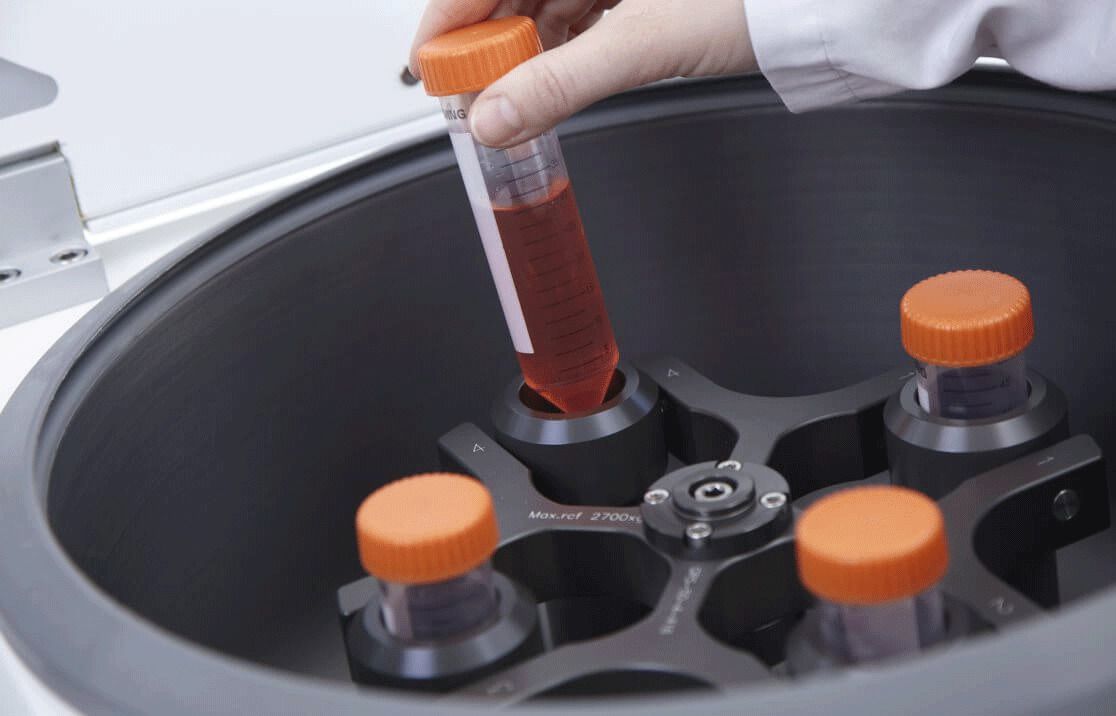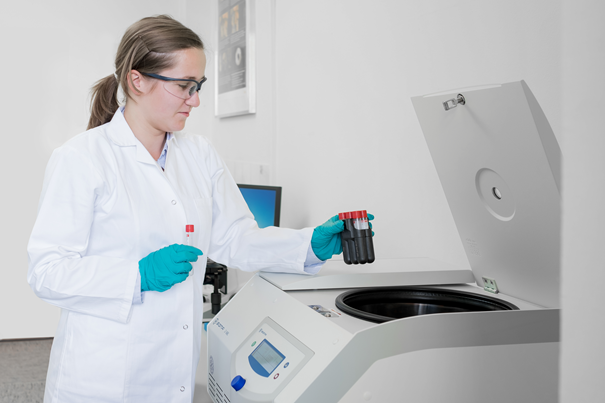What can a centrifuge used in a laboratory do?
Why are centrifuges often used in laboratories? Many people wonder what a centrifuge is, what its uses are, and how it works in practice. If you are also having similar questions, let's find out right away!
Contents
What is this machine used for?
Do you know why in a blood test, components such as plasma and blood cells can be clearly separated? That is thanks to the centrifuge that separates the mixture based on the difference in density. When spinning at high speed, the centrifugal force will push the heavier components to the outside, while the lighter components will concentrate in the center. Thanks to this principle, centrifuges are widely used in medicine, biology, chemistry and many other fields.

Centrifuge Operation Method in Laboratory
Check centrifuge tube before use
Before starting, it is necessary to carefully check the centrifuge tubes. Tubes with signs of cracks should be removed immediately, because when the machine operates at high speed, the centrifugal force can cause the tube to break, causing the sample to spread out, causing cross-contamination between samples, which can affect the safety of the operator.
Centrifuge operation steps, we have 4 steps
Step 1: Prepare the sample before starting the machine. The sample should be loaded into the centrifuge tube with a capacity of about ⅔ to ensure optimal separation performance. Then, tighten the tube cap and place it in the rotor in the centrifuge chamber, ensuring that the tubes are symmetrically placed and balanced in weight.
Step 2: Close the machine lid firmly, when you hear a "click" sound, it is a sign that the lid is securely locked.
Step 3: Set the appropriate working mode. The centrifugation process has two most important parameters: speed and time. These parameters need to be set at the beginning and can be adjusted during operation if necessary.
Step 4: Start the machine, gradually increase the motor speed to the desired value and monitor the operation to ensure stable operation.
Stop the centrifuge properly
To ensure safety and keep the device running durably, stopping the centrifuge also needs to be done correctly.
Step 1: When the machine finishes operating time, the meter will automatically turn off the power. At this time, the motor is still rotating by inertia, so it is necessary to use the brake to stop completely.
Step 2: Press the switch to open the machine cover, wait for the indicator light to turn on, then carefully open the cover by hand.
Step 3: Turn off the power, check all switches before removing the sample from the machine. After collecting the sample, close the machine cover to protect the equipment and ensure the working environment is always neat and safe.
Basic requirements for centrifuge quality

Centrifuges are indispensable equipment in laboratories and research facilities, serving many purposes such as cell analysis, plasma separation, DNA separation, etc. To ensure stable and accurate operation, the machine needs to meet the following important quality standards:
High speed and flexible adjustment for each type of test or different centrifugation process.
Control working time, helping the operator to set up according to each specific requirement.
Equipped with a measuring and indicating system, helping to monitor the operating status of the machine during operation.
Smooth operation, no vibration, ensuring sample accuracy and the ability to stop the motor immediately when necessary.
See Centrifuge products here!